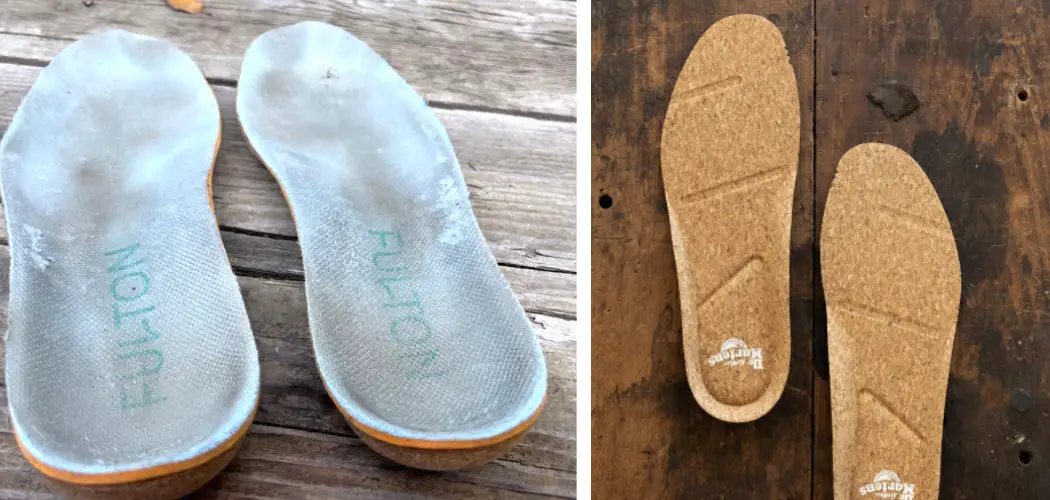Cork insoles have become a staple in the world of comfortable and sustainable footwear, renowned for their natural durability, cushioning properties, and breathability. These unique characteristics contribute to an enhanced walking experience and promote a healthier environment for your feet by reducing moisture and preventing odors. Understanding how to clean cork insoles is vital for maintaining these benefits.
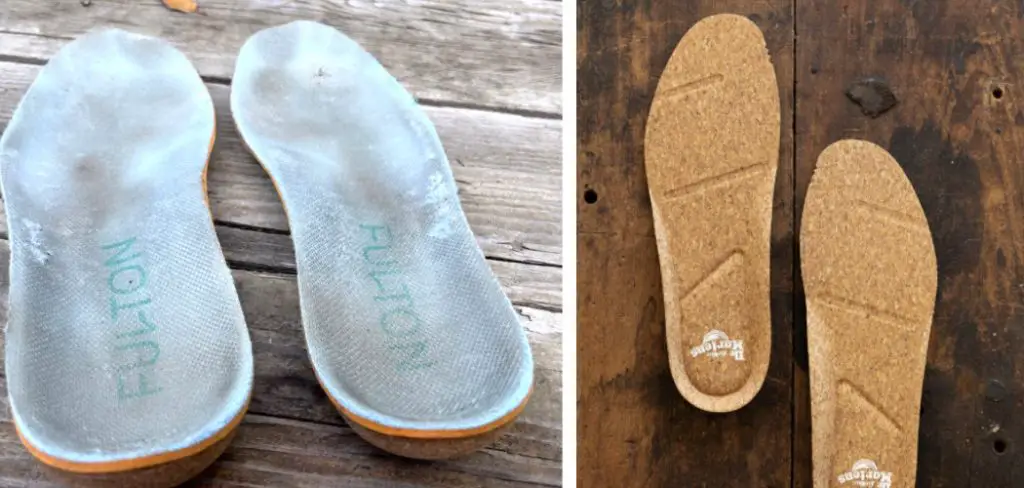
Regular cleaning is paramount to preserving hygiene and prolonging the lifespan of cork insoles. Dirt, sweat, and bacteria can accumulate over time, potentially degrading the material and compromising its natural advantages. This guide is designed to demystify the process of cleaning cork insoles, offering simple yet effective techniques to keep them fresh, odor-free, and in prime condition for prolonged use. By incorporating these cleaning practices into your routine, you ensure your cork insoles remain a hygienic and comfortable foundation for your footwear.
Preparing the Cleaning Area
Before launching into the cleansing ritual for your cork insoles, properly preparing your cleaning area and the essential materials is critical. This initial step ensures a systematic and efficient cleaning process, contributing significantly to maintaining your insoles’ hygiene and quality. Here’s how to set the stage:
A. Gather Materials
To begin, assemble the following items, which will aid in the gentle yet effective cleaning of cork insoles:
- Mild Soap: A gentle, non-abrasive soap will serve as your primary cleaning agent, ensuring the cork material is not stripped of its natural properties.
- Water: Preferably lukewarm, water will be used in conjunction with the mild soap to create a cleaning solution.
- Soft Brush or Cloth: A soft-bristled brush or a soft, lint-free cloth will help remove surface dirt without scratching the cork surface.
- Towel: An absorbent towel is necessary to pat dry the cork insoles after cleaning, removing excess moisture.
B. Choose a Well-Ventilated Area
Identify a well-ventilated and clean space for the drying process. Good air circulation is crucial for effectively drying the insoles, as it prevents the formation of mold and unpleasant odors. A well-ventilated area ensures that air moves freely around the insoles, facilitating quick and even drying without direct exposure to sunlight or heat sources, which could damage the cork.

C. Remove Insoles
The final preparatory step involves carefully removing the cork insoles from your shoes. This is necessary for thorough cleaning and ensures that every part of the insole, including areas that are typically hidden when inserted in shoes, is accessible and adequately cleaned. Taking out the insoles also allows them to fully dry, maintaining the structural integrity and comfort of the cork material.
How to Clean Cork Insoles: Gentle Cleaning Process
The next phase in ensuring the longevity and freshness of your cork insoles involves a gentle yet thorough cleaning process. This stage is designed to remove any accumulated dirt and stains without compromising the cork’s natural integrity. By adhering to the steps below, you can effectively clean your cork insoles while preserving their quality and comfort.
A. Brush off Debris
The first step is to use a soft brush or cloth to gently remove any surface debris or loose dirt from the cork insoles. This action should be done carefully to avoid scratching or damaging the cork surface. A soft-bristled brush, similar to those used for delicate garments, is perfect for this task. For areas where dirt is more ingrained, lightly dampening the brush or cloth can help lift the dirt more effectively.
B. Prepare Cleaning Solution
Next, create a cleaning solution by mixing a mild soap or detergent with warm water in a bowl or container. It’s important to ensure that the soap chosen is gentle to maintain the natural properties of the cork. Harsh chemicals or abrasive cleaners should be avoided as they can strip the cork of its natural resilience and moisture resistance. A few drops of the mild soap in a bowl of warm water are sufficient to create an effective cleaning mixture.
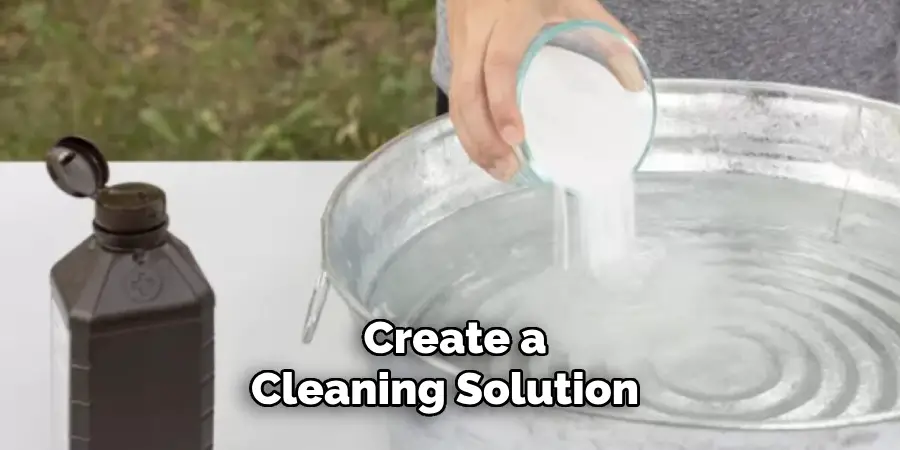
C. Clean with Care
Once the cleaning solution is prepared, dip a soft cloth or brush into it and gently wipe the cork insoles’ surface in circular motions. The goal here is to clean the cork without saturating it with too much water, which could lead to warping or other damage. Focus on areas that seem particularly dirty or stained, applying a bit more pressure as needed but always with a gentle hand. After going over the entire surface of each insole, rinse the cloth or brush, wring out any excess cleaning solution, and go over the insoles once more to remove any soap residue.
This gentle cleaning process will ensure that your cork insoles are clean and maintained in a condition that upholds their structural integrity and comfort.
How to Clean Cork Insoles: Rinse and Dry
Proper rinsing and drying play a pivotal role in caring for cork insoles, ensuring that they are clean and preserved in optimal condition. This phase requires meticulous attention to detail to prevent damage and extend the life of your insoles.
A. Rinse Thoroughly
After the gentle cleaning process, it is crucial to remove any soap residue from the cork insoles. Carefully rinse off the cleaning solution using a clean, damp cloth or sponge. This step must be conducted with gentleness to avoid soaking the cork, which could damage its natural structure. Ensure that the cloth or sponge is only slightly moistened to remove the soap without saturating the insole. The aim here is to leave the cork insoles free of any soap particles that could attract dirt or degrade the material over time.
B. Remove Excess Moisture
Following a thorough rinse, the next step is to remove any excess moisture that could impede the drying process or potentially harm the cork material. Using a clean, absorbent towel, pat the cork insoles gently. This action helps absorb moisture from the cork without applying too much pressure, which could deform the insoles. This step aims to eliminate as much water as possible, significantly reducing drying time and minimizing the risk of moisture-related damage.
C. Air Dry Completely
The final and one of the most critical steps in caring for cork insoles is allowing them to air dry naturally. Place the insoles in a well-ventilated area, away from direct heat sources or sunlight. Direct exposure to heat or sunlight can lead to warping, shrinking, or cracking of the cork, compromising its comfort and structural integrity. Good air circulation is crucial to ensure even and thorough drying. Depending on the humidity and temperature, the drying process can take several hours or up to a day. It is essential to ensure the insoles are completely dry before reinserting them into your shoes to prevent mold growth or an unpleasant odor.
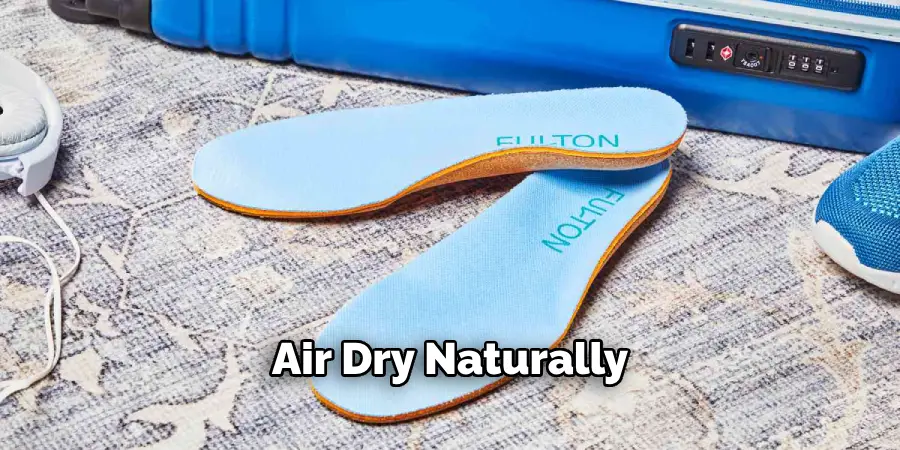
Deodorizing and Refreshing
After ensuring that your cork insoles are thoroughly clean and completely dry, the next step to maintaining their freshness is deodorizing and refreshing them. This stage is vital, especially for those who frequently wear shoes without socks, as it helps eliminate odors and add a pleasant scent to the insoles. The methods below will help keep your cork insoles smelling fresh and create a more enjoyable wearing experience.
A. Natural Deodorizers
One of the most effective and natural ways to deodorize cork insoles is by using baking soda or cornstarch. These substances are excellent at absorbing moisture, which is often the source of odors. To apply, simply sprinkle a generous amount of baking soda or cornstarch directly onto the cork insoles, ensuring that the entire surface is covered. The powder absorbs any lingering moisture in the cork and neutralizes smells, leaving your insoles odor-free.
B. Essential Oils
For those preferring a more fragrant approach, adding a few drops of essential oils to the cork insoles can combat odors and impart a refreshing scent. Tea tree oil is renowned for its antimicrobial properties, making it an excellent choice for its ability to discourage the growth of bacteria that can cause odors. Lavender oil, on the other hand, is popular for its calming scent. Simply add a few drops of your chosen essential oil onto each insole and spread it evenly with a cloth or your fingers.
C. Let Sit Overnight
To maximize the effectiveness of the deodorizing and refreshing process, it’s recommended to allow the baking soda, cornstarch, or essential oils to sit on the cork insoles overnight. This duration gives the natural deodorizers and essential oils ample time to absorb odors fully and infuse the cork with a pleasant aroma. In the morning, simply shake off any excess baking soda or cornstarch from the insoles before reinserting them into your shoes. The result will be fresh-smelling, inviting footwear that enhances your daily comfort.
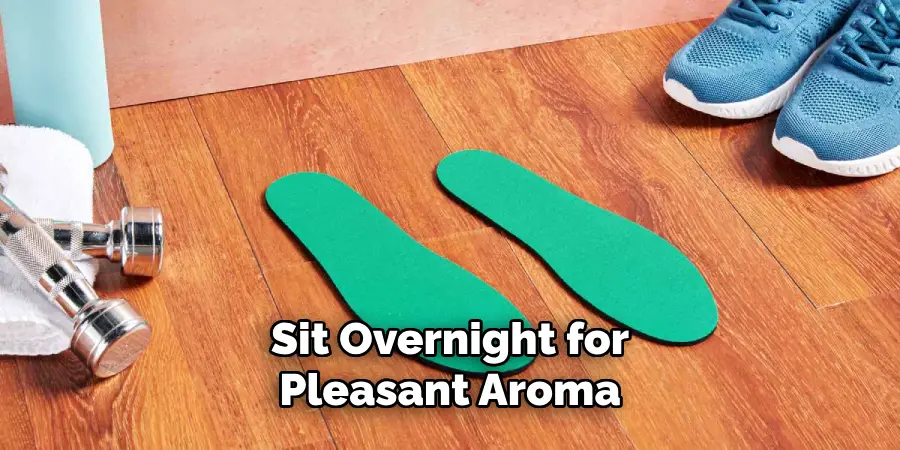
Maintaining Cork Insoles
Maintaining the quality and comfort of your cork insoles over time requires attention to several key practices, including regular cleaning, moisture management, and proper storage. Adhering to these guidelines ensures that your cork insoles remain in optimal condition, providing support and comfort with every step.
A. Regular Cleaning Routine
Establishing a regular cleaning routine for cork insoles is crucial for preventing dirt, sweat, and odor buildup. Ideally, insoles should be cleaned lightly every few weeks, depending on their usage and the wearer’s activity level. A gentle cleaning, as outlined in the previous sections, involves brushing off surface dirt and applying a mild soap solution with a soft cloth. This routine keeps the insoles fresh and preserves the material’s natural properties, preventing premature wear and tear.
B. Avoiding Excessive Moisture
Cork is naturally moisture-resistant, but excessive exposure to water or moisture can lead to problems like mold and mildew growth, which can damage the insoles and cause unpleasant odors. It’s important to keep cork insoles as dry as possible. If they become wet, whether from perspiration or external moisture, following the rinsing and drying steps promptly can prevent water damage. Additionally, avoid wearing the same pair of shoes with cork insoles day after day without allowing them to dry completely, as this can also contribute to moisture accumulation.
C. Proper Storage
When not in use, storing cork insoles in a cool, dry place helps preserve their integrity and extend their lifespan. This could mean removing the insoles from shoes and placing them in a well-ventilated area, or if the insoles are being stored for a longer period, ensuring they are kept away from direct sunlight and heat sources which could cause them to warp or crack. Using breathable storage containers or cloth bags can further protect the insoles from dust and moisture while allowing air circulation to keep them fresh.
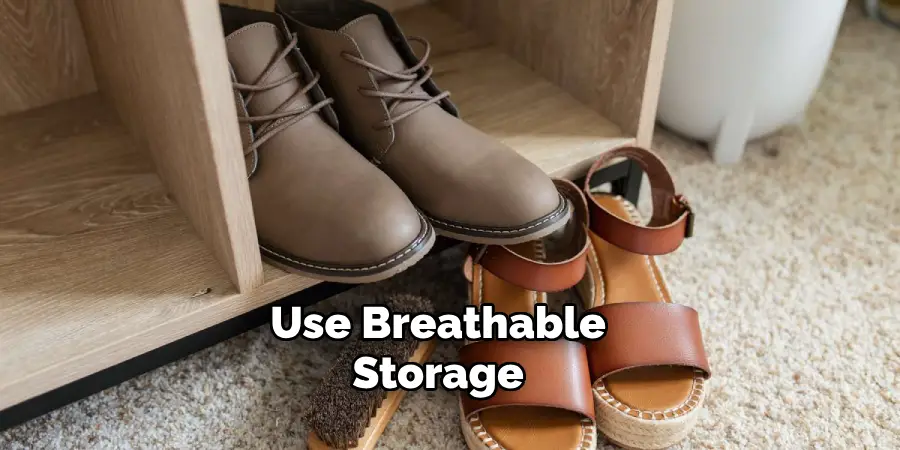
By incorporating these maintenance practices into your routine, you can significantly enhance the longevity and performance of your cork insoles. Regular cleaning prevents the buildup of contaminants that can degrade cork, and managing moisture ensures the insoles retain their structural integrity. Proper storage avoids environmental factors that could otherwise compromise their quality. Together, these efforts keep your cork insoles in top condition, ready to support your feet comfortably and hygienically in any footwear.
Additional Tips
Ensuring your cork insoles serve you well for as long as possible requires routine maintenance and adopting certain practices that prevent premature damage. Here are some additional tips to help you get the most out of your cork insoles.
A. Avoid Harsh Chemicals
It’s crucial to avoid the use of harsh chemicals or solvents when cleaning cork insoles. These substances can strip away the natural oils present in the cork, leading to dryness, cracking, and deterioration of the material. Instead, opt for mild, natural cleaning solutions that are less likely to cause damage. You often need gentle soap mixed with water to clean cork effectively without compromising its integrity. This approach ensures that your insoles retain their natural properties and durability over time.
B. Gentle Handling
Cork, while durable, can be susceptible to scratches and tearing if handled roughly. It’s essential to treat cork insoles gently during the cleaning and drying process. Use a soft cloth or sponge for cleaning and avoid wringing or twisting the insoles, which can cause them to warp or break. When drying, pat the insoles gently with a towel and allow them to air dry naturally rather than exposing them to direct heat sources. Gentle handling helps maintain the structure and appearance of the cork, keeping the insoles looking and feeling like new.
C. Replace When Necessary
Despite the best care and maintenance, cork insoles will eventually show signs of wear and tear. It’s important to recognize when they no longer provide the necessary support or comfort and need to be replaced. Indicators include noticeable cracks in the material, persistent odors that can’t be eliminated through cleaning, and flattened areas that compromise the insole’s effectiveness. Replacing your cork insoles when they become worn out ensures that your footwear remains comfortable, supportive, and hygienic.
Adhering to these tips can greatly extend the life of your cork insoles, ensuring they continue to provide comfort and support. By avoiding harsh chemicals, handling the insoles gently, and replacing them when necessary, you can maintain the quality and functionality of your cork insoles, making your footwear experience as enjoyable as possible.

Frequently Asked Questions
Q1. Can Cork Insoles Be Cut to Fit My Shoes?
Yes, cork insoles can be trimmed to fit your shoes better. Use your shoe’s original insole as a guide, tracing its outline onto the cork insole. Then, carefully cut along the traced line with sharp scissors to ensure a clean, accurate cut. However, proceed with caution to avoid altering the insole’s structure or support.
Q2. How Often Should I Replace My Cork Insoles?
The lifespan of cork insoles varies based on usage, care, and individual wear patterns. Typically, it’s recommended to replace them once they start showing signs of significant wear, such as deep cracks, flattening of cushioned areas, or persistent odors that don’t go away with cleaning. Replacing cork insoles every 6 to 12 months is advisable for most individuals.
Q3. Are Cork Insoles Suitable for All Types of Footwear?
Cork insoles are versatile and can be used in various types of footwear, including casual shoes, sneakers, and boots. Their natural moisture-wicking and odor-resistant properties make them an excellent choice for everyday wear. However, for very tight-fitting shoes, such as certain dress shoes or specialty athletic footwear, ensuring the insole thickness does not compromise fit is crucial.
Q4. Can Cork Insoles Get Wet?
While cork is naturally moisture-resistant, prolonged exposure to water should be avoided. If your cork insoles get wet, remove them from your shoes and allow them to air dry completely away from direct heat. This prevents moisture buildup, which can lead to mold and mildew growth, and helps maintain the insoles’ shape and effectiveness.
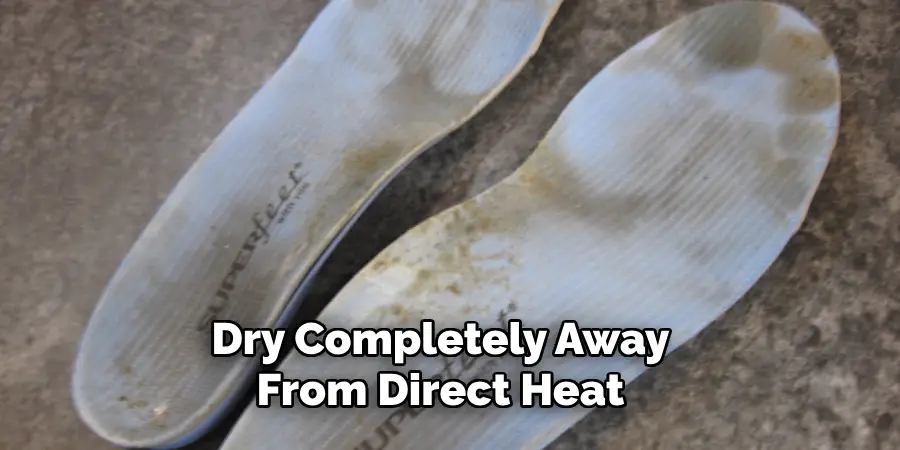
Conclusion
In this comprehensive guide, we’ve navigated through the practical steps on how to clean cork insoles, ensuring they remain fresh, clean, and odor-free. From a simple yet effective cleaning routine to addressing the critical aspects of avoiding excessive moisture and ensuring proper storage, we’ve covered essential practices to maintain the quality and longevity of cork insoles. The importance of regular maintenance and the right care cannot be overstated; it preserves your insoles’ functionality and performance, keeping them supportive and comfortable over time.
We hope this guide empowers you to integrate cork insole care into your regular footwear maintenance routine. Remember, investing a small amount of time in keeping your cork insoles clean contributes to hygienic and enjoyable wear and extends the life of your insoles. By following these guidelines, you’ll ensure that every step you take is supported by the natural resilience and comfort of well-maintained cork insoles.

